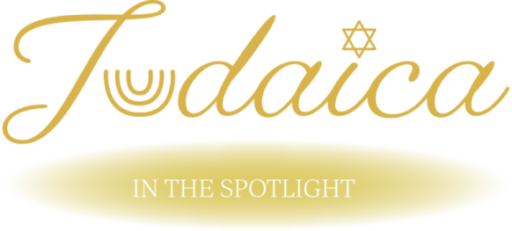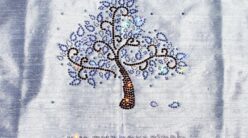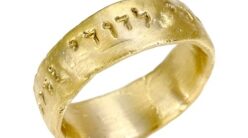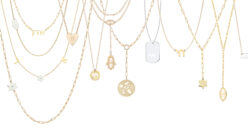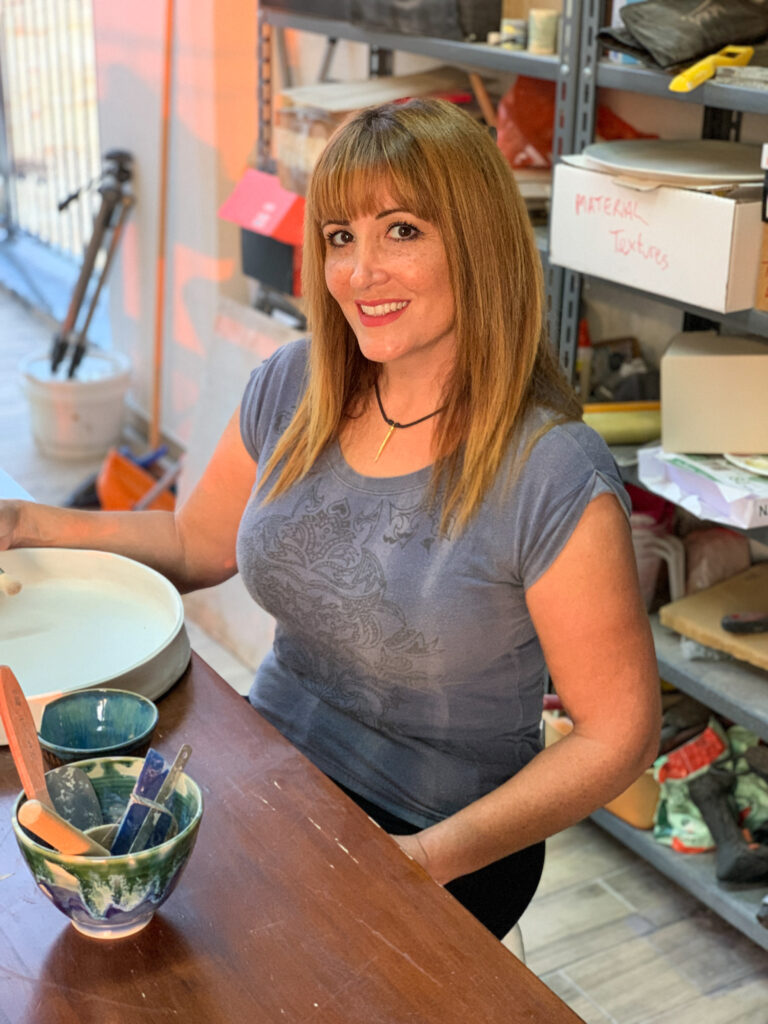
Photo: Courtesy of Naomi Tate Maghen
Tell us a little bit about yourself and your background.
I grew up in London in a modern orthodox family. My dad is an immigrant from Libya and though he speaks English fluently and is extremely well integrated in British society, I believe that having a father who had to flee his home, had a strong impact on me and on my artwork. I always felt ‘other’ – like I didn’t entirely belong. This was amplified at home as I decided from a young age that I didn’t want to be religious. (I’ve been dancing with religion ever since).
Going to school in Central London, I experienced several anti-Semitic incidents which heightened my feeling of discordance. I travelled to Israel for a gap-year after high school with Bnei Akiva and feeling truly comfortable in my surroundings for the first time during that year, I decided to stay. I’ve been living in Israel for 28 years to date.
I’ve been married twice, and my second divorce is currently underway. The two constants in my life that I’m eternally grateful for are my four wonderful (mostly adult) children, and creating art.
What Inspired you to become an artist?
The way I see it, I didn’t really choose to become an artist, rather, art chose me. I was singled out for having artistic talent from a very young age. At 8 years old, my painting ‘Splitting of the Sea’ was selected to be displayed at the Ben Uri Gallery in London; in school, I was awarded the school prize for accomplishment in art and at home, I was praised for my artistic ability. At 11 years old I would spend school recess drawing portraits of my friends, and when I was feeling down, I’d externalise my emotions by drawing or painting self-portraits (as well as writing poetry).
While being a stay-at-home mum, I continued painting and when I finally did my degree, I chose to study Fine Art and Education. Following the degree, I taught art to youth at risk in two schools, but I didn’t become a professional artist until the first lockdown in 2020.
At the time, I had been working as a real estate agent for two years and hadn’t had the opportunity to create since starting the job. During the first lockdown, I painted a series of oil paintings and realised that I had to enable myself to continue creating art, daily. One morning, I was searching for a special mug to have a coffee and I couldn’t find one. I searched online and nothing shouted out to me and that’s when I had my lightbulb moment “I could make a mug!” I had been trying to think of an artform which I could potentially support myself doing and at that moment, I knew I had found it.
During my degree, I had taken a few courses in ceramics, but hadn’t touched clay since. I remembered with longing how much I had loved working with clay as a medium – it’s so raw, so primal and so receptive. I also always found that when I would relinquish a certain degree of control over my art and would allow intuition and chance to play a dominant role, my art was more successful. Clay is the perfect medium for this approach.
What is your speciality?
Until my degree, my specialty had always been oil painting. During the degree, I didn’t paint once as I was hungry to discover other mediums. I focused on photography, sculpture, video art, ceramics and drawing. The main themes which I explored in these mediums were fragmentation, alienation, appropriation, identity and the concept of home.
For the last eighteen months, I have been entirely focused on ceramics. The area that I have spent the most time developing has been glazing and specifically, learning how to manipulate multiple layers of glaze in order to create unique and alluring surfaces.
Although I wouldn’t say I’ve been consciously focusing on my recurrent themes, I do find the concept of making functional items for the home to be incredibly rewarding and meaningful. I see my pieces as vessels for memories, and as objects which connect a person to their surroundings – things which have always been elusive to me and of great significance.
How and where do you work?
I recently moved house and have built a studio on a large balcony. It’s currently still partially exposed to the elements, and I very much look forward to its completion!
What is the most indispensable item in your studio?
Good weather! When it’s very windy, not only is it uncomfortable, but the clay dries too quickly and complicates processes.
Where do you take your inspiration? Are you pursuing any themes?
I see my functional work as an exploration in a kind of abstract expressionism. I work in a very intuitive fashion, drawing inspiration from within myself. It’s incredibly meditative and every piece is unique, informed by my mood and whatever is bubbling beneath the surface at a given moment.
I also draw inspiration from nature, particularly ocean and mountain scenery, and I try to convey the serenity, or alternatively, the tumultuous nature inherent in these places through my work.
I’m enjoying experimenting with ways to explore my recurrent themes through these functional pieces.
Do you do bespoke work?
I have done some bespoke work and I enjoy the challenge of realising someone else’s vision or collaboratively developing a vision. Whether or not I can accept bespoke work depends on what I’m working on in the studio at the time of the request and where it falls within the cycle of that work.
What projects are you currently working on?
As functional ceramics, and particularly Judaica are quite seasonal, I’m currently working on a new series of Seder Plates and toying with a few ideas for Tu Bishvat and Valentine’s Day. I’m also developing some new forms of light fixtures and other more sculptural work.
What is your favourite item in your current collection?
This is a tough question! The pieces which I’m most connected to are the ones which presented the greatest challenges and are the result of overcoming those challenges. I think the piece which fits this description the most is my ‘Splitting of the Sea’ Seder Plate. I worked on developing a new glazing technique which is reminiscent of a landscape (I call them glazescapes) over six months. I started on small ornaments and pendants and from there experimented using the technique on larger work. There were many failed pieces along the way! This Seder Plate was the first successful implementation of this technique on a larger scale.
How do you know when a piece is finished?
A piece is scrutinized in several ways in order to determine if it’s finished. Firstly, it needs to be free from significant flaws. As I take a lot of risks in my approach to glazing, and generally enjoy breaking ‘rules’ and pushing the boundaries of the medium, I have a relatively high ‘failure’ rate. This could mean that the glazes ran too much, or that the off-gassing in the kiln formed pinholes on a piece etc.
If a piece passes this kind of quality control testing, it’s down to how I respond to a piece. Does it speak to me? Do its form and glaze live harmoniously together? If the answer is yes, it’s finished. If not, I’ll reglaze it, or perhaps add gold accents, or possibly, it’ll become a brush holder for my studio or a mug for my personal use.
What was the first artwork you ever sold?
It was a bespoke piece, an oil painting of a family portrait, from an old, black and white photograph.
Which project have you enjoyed working on the most so far?
Everything that I do as an ongoing project in which I’m developing my voice and honing my skill in order to actualise my vision through my chosen medium. I love every moment of it!
What do you want to achieve with your work and what are your wishes for the future?
My greatest desire is that the business side of my work is successful in order to enable me to continue focusing all my time on creating art.
I have a strong drive to expand my practice to include ceramics of a more sculptural nature and to create a body of work which is less functional and more ‘Fine Art’ – or, to find new ways to combine the two.
I’m also interested in carving out time to work on oil painting, as well as ceramics, and perhaps adding a page for other artforms on my site in the future.
Where can we find your work?
https://www.instagram.com/naomitatemaghen/
https://www.facebook.com/naomitatemaghen/
I can also be reached at [email protected]
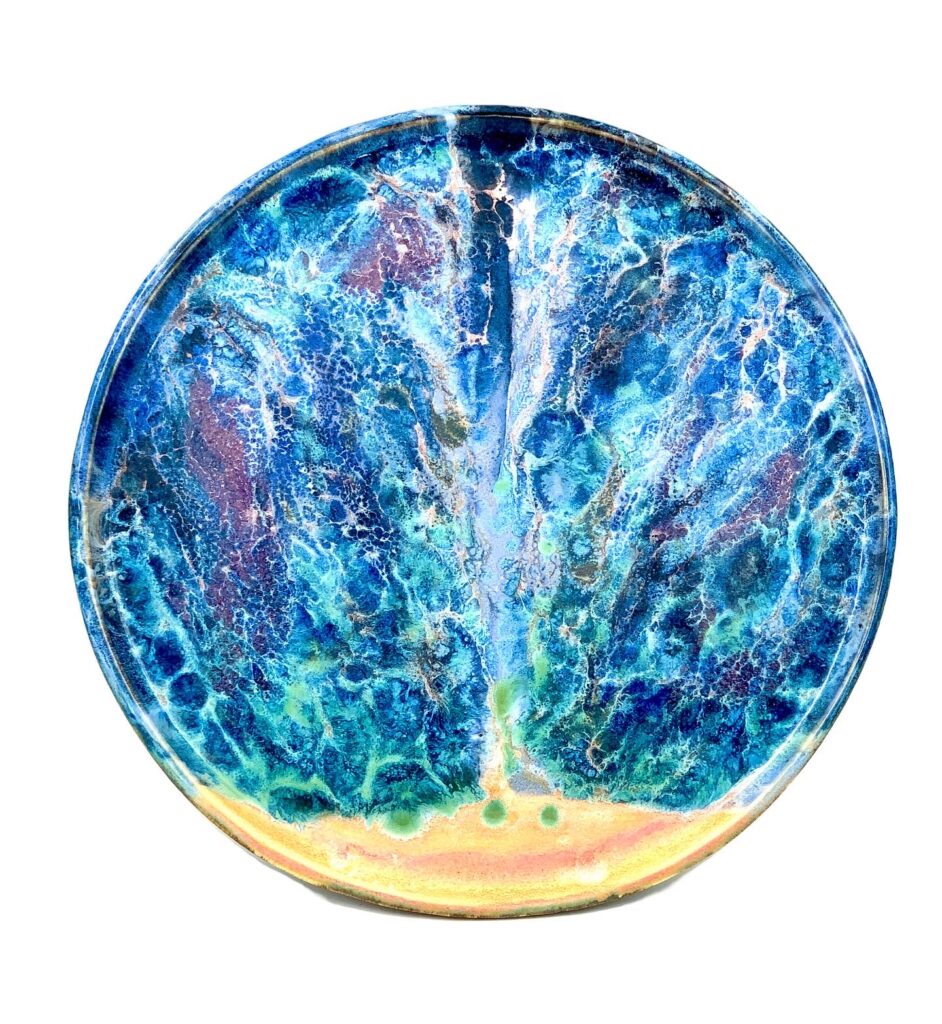
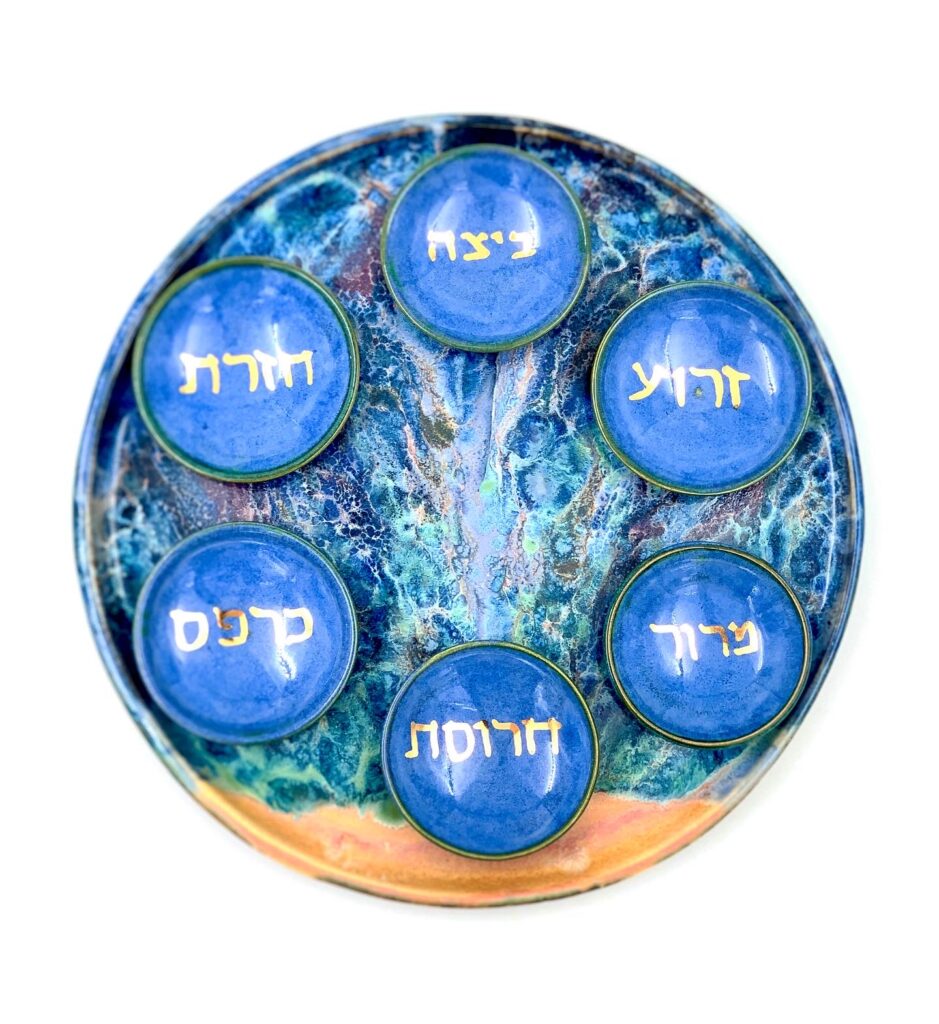
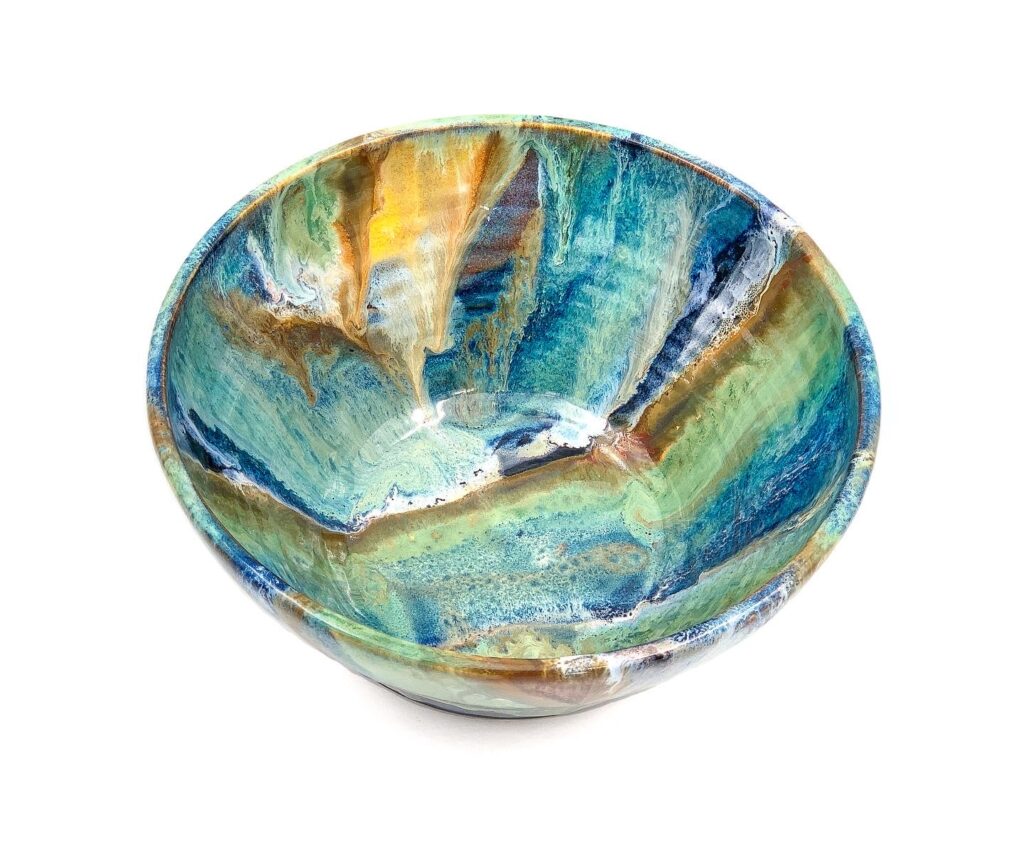

Photos: Courtesy of Naomi Tate Maghen
